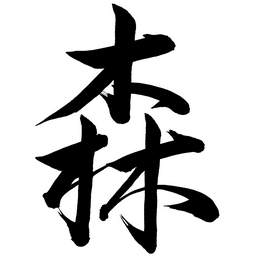| Articles | |
| Sharon Small | A Daoist Exploration of Shenming |
| Gabriele Libera | Losing What “Me”? An Existentialist Look at the Ego in the Zhuangzi |
| Shih-Shan Susan Huang | Daoist Seals, Part 2: Classifying Different Types |
| Ilia Mozias | Immortals and Alchemists: Spirit-Writing and Self-Cultivation in Ming Daoism |
| Ekaterina Zavidovskaia | Daoist Ritual Manuals in Vietnam: Self-Cultivation, Cosmic Steps, and Healing Talismans |
| Forum | |
| Ashley South | Daoism and Peacebuilding: Toward an Agenda for Research and Practice |
| Jeffrey Meyer | A Call to China: Daoism in Modern American Fiction |
| Yunrou | Yin—A Love Story: Daoist Fiction by a Taiji Master |
| Ron Catabia | Dantian Cultivation and the Hard Problem of Consciousness |
| Serban Toader | A Romanian Spiritual Seeker’s Growth: From SciFi Readings to Neidan |
| Donald D. Davis | Meditation, Taijiquan, and Qigong: Evidence for Their Impact on Health and Longevity |
Sharon Small – A Daoist Exploration of Shenming
Shenming (spirit brightness) is an important term in pre-Qin Daoist thought, notably appearing in three excavated texts from two locations, Mawangdui and Guodian. The Mawangdui texts of the Shiwen and the Huangdi sijing show how shenming, both as a cosmological and a concrete physical concept, derives from the heavenly and is then applied to the human. In the Guodian text of the Taiyi shengshui, the term occupies a crucial position in the process of creation, beginning with the Great One and ending with the formation of time. The concept ranges from cosmological and metaphysical to ontological and physical meanings. The observation of its usages within their textual context contributes to understanding Pre-Qin thought and a better understanding of the development of thought and language of the time.
Gabriele Libera – Losing What “Me”? An Existentialist Look at the Ego in the Zhuangzi
Even though the concept of ego is clearly not of Zhuangzi’s time, and most of its uses are not appropriate categories to interpret the Zhuangzi, the existentialist conception of ego presents a relevant exception. Existentialist views on the ego’s hypostatization and on its role as a source of alienation make Existentialism a good candidate to expound some aspects of the Zhuangzi and give its theory of mind a clearer theoretical basis. To grasp what it means for Zhuangzi to “lose one’s me,” this paper follows the path laid down in the “Qiwulun” (ch. 2), starting from value judgments to the fixed heartmind, and through existentialist ideas shows why the crux of freedom is the emptiness and consequent mutability of the ego, not its absence or its eradication.
Shih-Shan Susan Huang – Daoist Seals, Part 2: Classifying Different Types
This second part of the study of Daoist seals focuses on types, building on Wang Yucheng’s earlier studies. They come in four: 1) seal script; 2) heavenly scripts; 3) talisman-inspired; and 4) graphic. The underlining criterion is the Daoist strategy of image-making: it sheds light on the interlocking relationship of Daoist texts and images. The first type is purely scriptbased, while the fourth is purely graphic. Between the two is the core zone of Daoist visual culture as it blends image with text.
Ilia Mozias – Immortals and Alchemists: Spirit-Writing and Self-Cultivation in Ming Daoism
What role do immortals play in the life and practice of a community of alchemists? In this paper, I examine the role of immortals in the cultivation practice of a small alchemical community formed around the famous Ming alchemist Lu Xixing. Lu and his companions had no connection to any religious institution, and instead of looking for a human master, they turned to the practice of spirit-writing. In séances, they met numerous immortals and discussed with them various aspects of self-cultivation and personal life. Lu collected detailed records of these conversations in his key treatise, which documents how immortals became members of their community and transformed alchemical cultivation into a journey in the twilight zone between the human and immortal worlds. They accompanied Lu and his companions on all stages of alchemical cultivation and helped them enter a state of mind necessary for achieving enlightenment. Participation in spiritwriting séances allowed the Daoists to practice internal alchemy without leaving their habitual literati life. Ekaterina Zavidovskaia – Daoist Ritual Manuals in Vietnam: Self-Cultivation, Cosmic Steps and Healing Talismans This paper examines visual representations—charts, talismans, and drawings—in Daoist ritual manuals contained in a collection of about 200 Chinese-language manuscripts from the Sino-Vietnamese border. Today kept in Taiwan, they presumably belonged to ritual specialists of Zhuang and Yao ethnic minority groups. This paper provides detailed analysis of many common graphic and pictorial images featured in Daoist manuals omnipresent in south China and, as this research shows, neighboring Vietnam. Used during the ritual of salvation of the soul of a deceased, these manuals present numerous talismans that formed part of the healing techniques practiced by Daoist priests.
